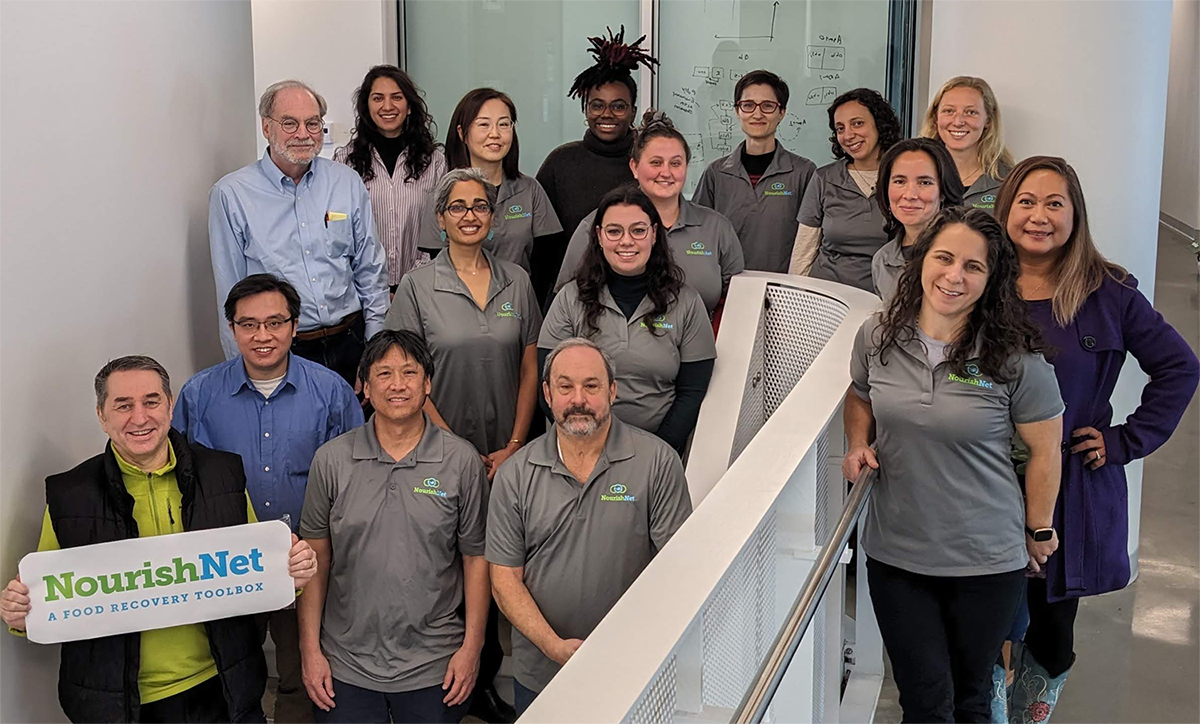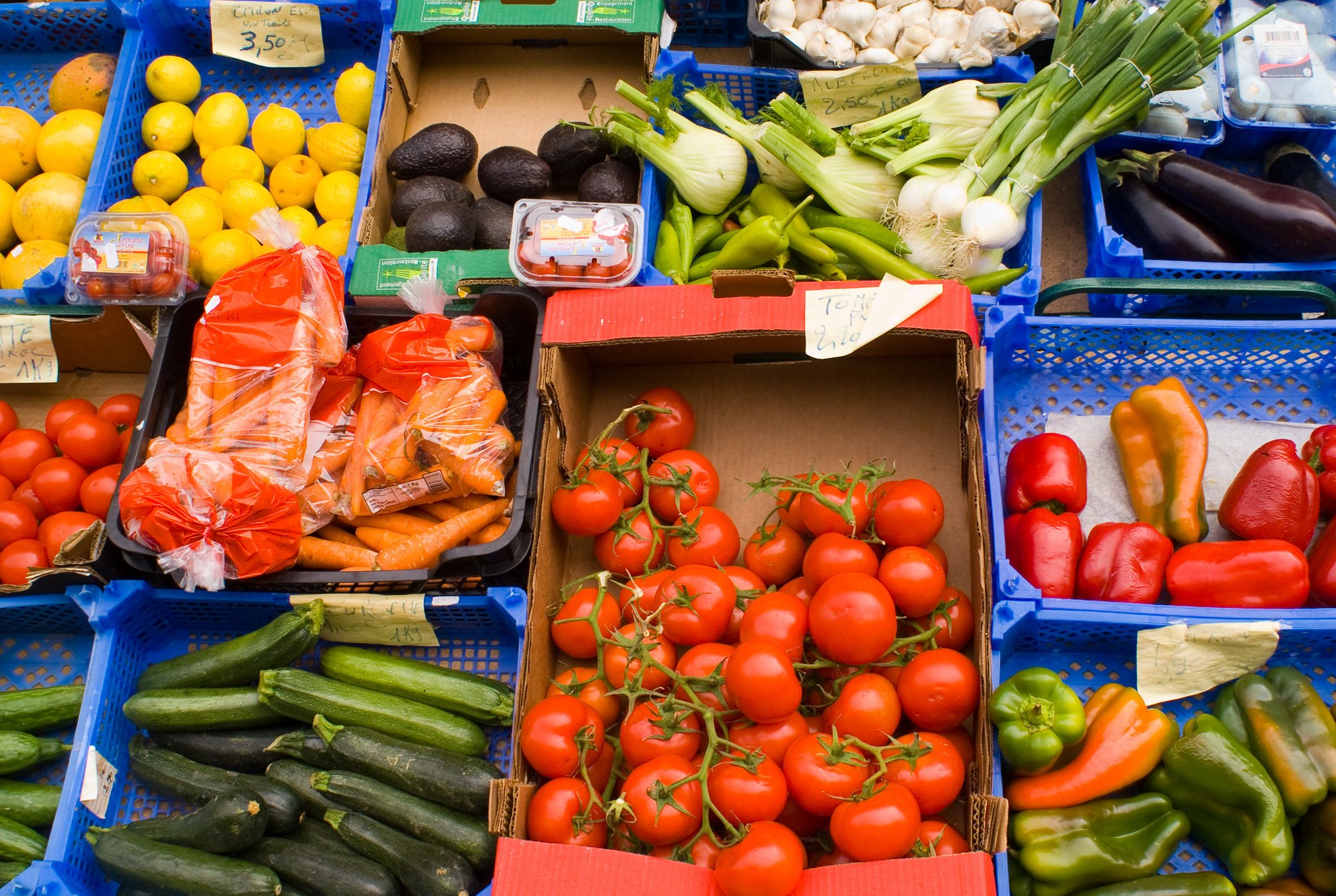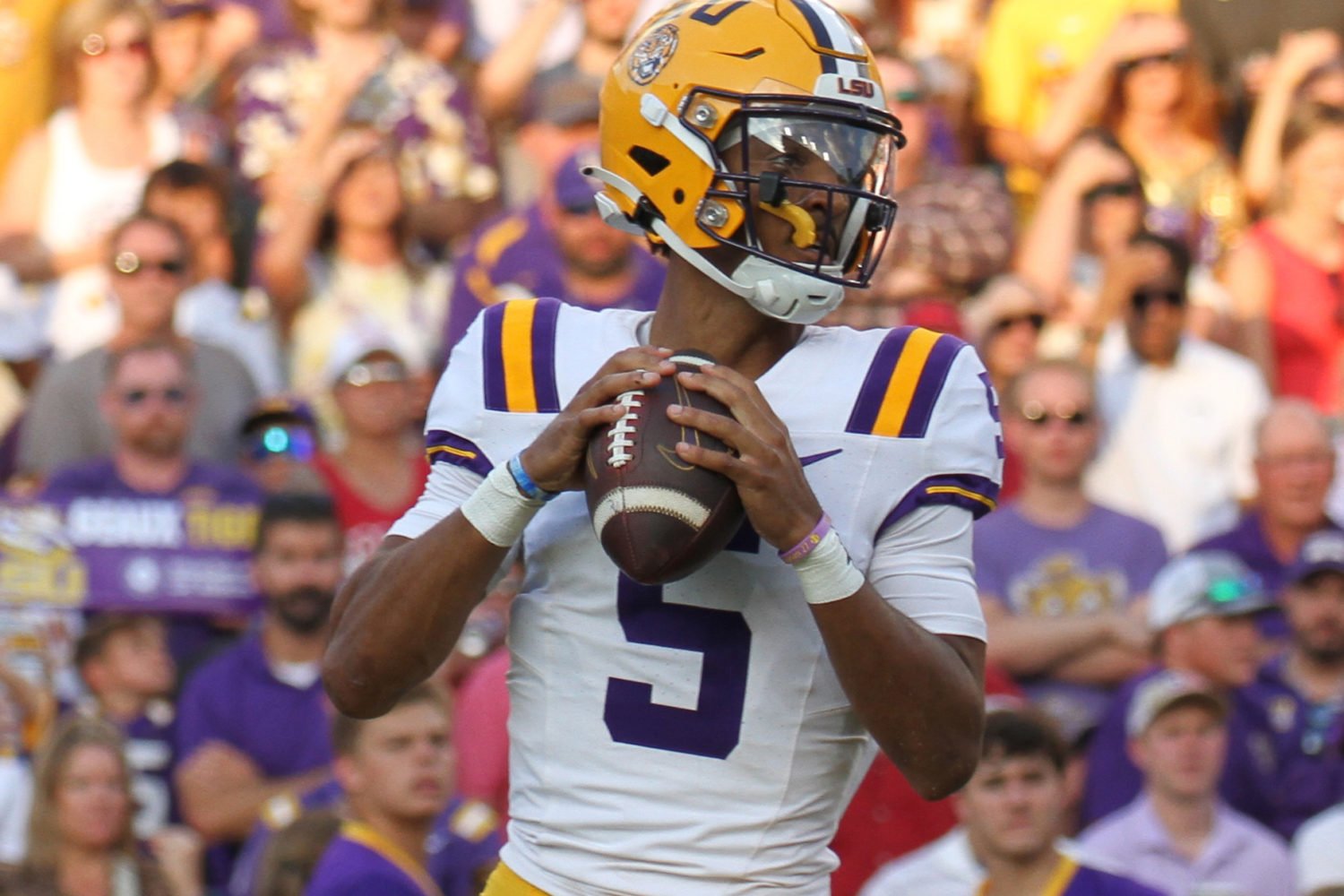Could an artificial “nose”—one much more sensitive than our human snouts—help prevent food waste? An interdisciplinary team behind a project called NourishNet at the University of Maryland is hoping so.
In a “Shark Tank”-style pitch last October, the team—wearing matching T-shirts emblazoned with its logo ‘’NourishNet”—explained its idea to the National Science Foundation, as part of NSF’s “Convergence Accelerator program,” which helps scientists take their innovations out of the lab and into real-world practice by encouraging interdisciplinary research.
During the pitch, the team introduced its device called “QuantumNose,” which was created by engineering professor Cheng Gong and previously won the university’s “Invention of the Year” in 2022. The “nose” (which looks more like a graphing calculator than anything resembling a snout with two nostrils) uses quantum materials, which are extremely thin (as in atomically thin) and sensitive, to measure the levels of gas produced by bacteria on degrading food.
“It’s basically a freshness sensor,” says Stephanie Lansing, an environmental science professor and the team’s principal investigator. “It’ll give food a freshness value, so if you have tomatoes or chicken or something else that you’re donating or that’s in the grocery store and you want to know its freshness value, the sensor provides that based on the type of food and the amount of gas it’s emitting.”

So how, exactly, does this electronic sniffer reduce food waste? Such data, says Lansing, could help grocery store managers—in addition to local farmers and producers—determine which foods should be marked down to sell before they go bad as well as which foods remain safe to donate to food banks rather than throw out.
“We talked to different grocery stores, and they would like to donate—that would be their preference—but they’re often just unclear and unsure [if something is safe] and so a lot of it just gets thrown out,” says Lansing. “So the idea is to provide the data to manage those resources better, so that we can increase our donation rate and reduce the amount that’s being thrown out and not being utilized properly.”
According to the US Department of Agriculture, roughly 30 to 40 percent of the food supply ends up as waste. “That produces a lot of greenhouse gases that fill up our landfills,” says Lansing, who adds that food waste occupies roughly 25 percent of landfills. “To have a fourth of the content be something that could feed people while we have food insecure people right here— it’s a linear disconnect, so [this research] is trying to make those connections.”
Helping to build those connections between surplus groceries and food insecure families is the other half of the NourishNet project: a new app called FoodLoops that would help recover food from producers and grocery stores by connecting them to food banks and the people who need it.
A similar app, called ChowMatch, is already in use in Montgomery County, and Lansing’s team is currently partnering with ChowMatch to create FoodLoops, which will incorporate the QuantumNose sensor (by showing food banks and consumers the quality of food they’re receiving) as well as a feature that allows food-insecure families to have some autonomy over what they eat. According to Lansing, families would be able to use the app to search for the foods they’d like to cook with and would be shown a map of food banks or donors that have such foods in stock. If none are available, Lansing says the families could also request certain foods and be notified when they are.
“Often they’re just kind of given what’s there [at the food bank], so the idea is to really give consumers a voice where they themselves can say, ‘Hey, I would like tomatoes. Where are tomatoes?’ And then the app allows them to navigate that,” says Lansing, who hopes it could eventually be deployed on a national scale.
If her team can lower the costs of the QuantumNose device, she says she could also envision it potentially landing in consumer hands too, as a way to help people know whether certain foods are still safe to eat after “sell by” and “best before” dates, which can often be misleading. “The sky’s the limit, and if we can get the cost to something that your average consumer would find value in, we would love to have it marketed that way as well,” said Lansing.
Seeing promise in the team’s pitch, the National Science Foundation ultimately awarded the team with a $5 million grant to help make it a reality. Six other teams throughout the country were also awarded similar grants for other agricultural innovations.
“Advancing food and nutrition security is a complex challenge that directly affects our nation’s economic competitiveness,” said the NSF’s assistant director for technology, innovation, and partnerships, Erwin Gianchandani, in a press release earlier this month. “We hope this investment will reduce wasted food while aiding the 12.8% of U.S. households that were food insecure in 2022.”


















